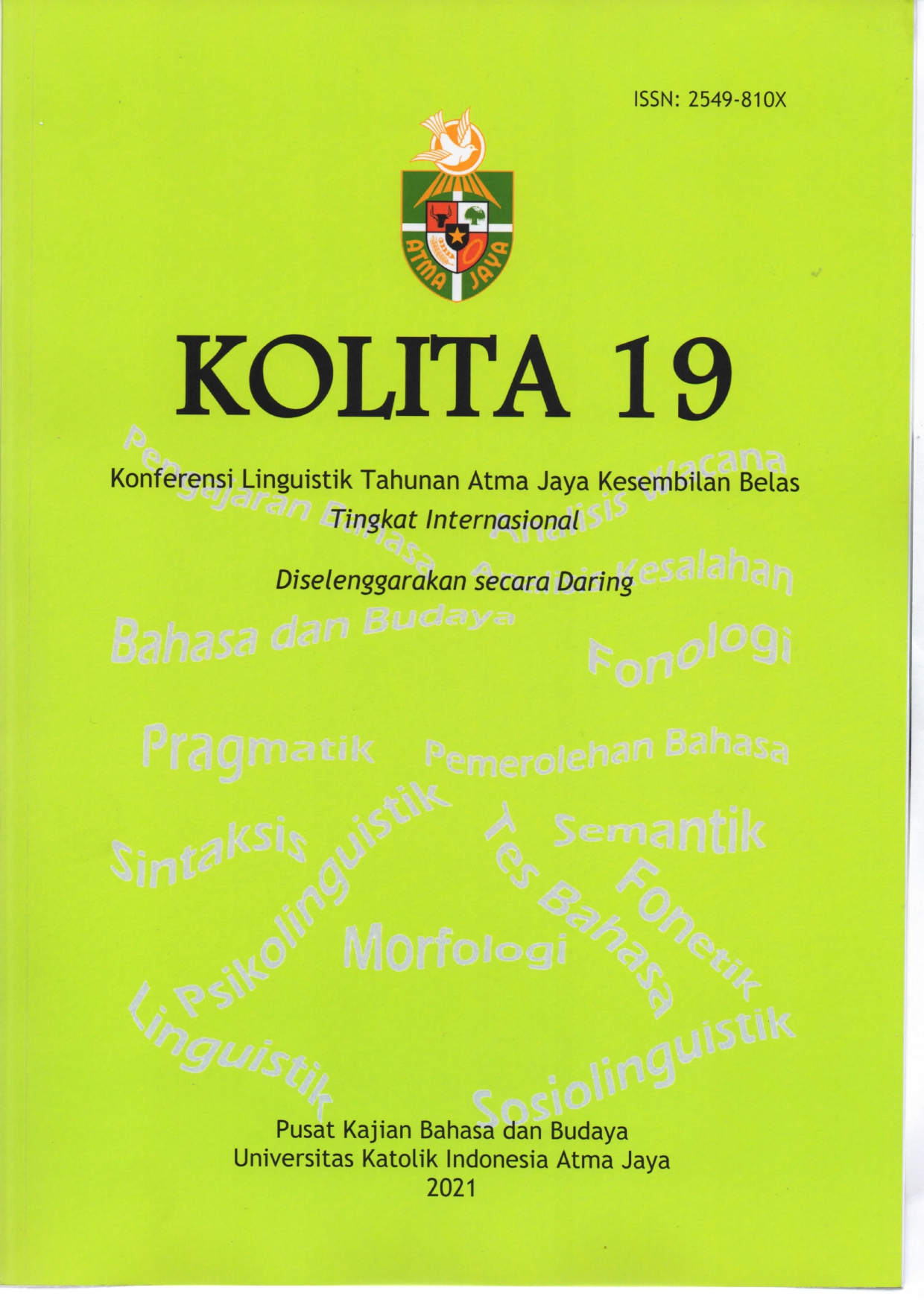EXAMINING THE ROLE OF EXPLICIT PHONETIC INSTRUCTION IN INTELLIGIBLE AND NATIVE-LIKE PRONUNCIATION TEACHING IN EFL SETTINGS
Keywords:
pronunciation teaching, explicit phonetic instruction, intelligibility, accentedness, foreign language speech learningAbstract
This research investigates the effect of explicit phonetic instruction on L2 pronunciation adopting two outcome measurements (i.e. rubric of intelligibility and accentedness). Ten native Indonesian students from English Phonology class participated in this study. They were randomly selected and divided into two groups; the experimental group and the control group and did pre-test as their entry points. After they received three hours of instruction in a classroom based setting with target pronunciation of English segmental diphthongs [aʊ], [aɪ], and [ɔɪ], and recorded their speech samples, three Native English listeners evaluated their speeches. The results suggest that explicit phonetic instruction had significant effect on the diphthongs production and intelligibility especially on the controlled level speech (sentence reading task) however, only slight reduction of foreign accent was found in this study. It is also found that most students mispronounced the diphthongs:
a) [aɪ] as in night was pronounced [eɪ],
b) [aɪ] in time was pronounced [e],
c) [aʊ] in house, shout, brown, sounded, was pronounced as [ɔ],
d) [aʊ] in sounded was pronounced as [ɔʊ] and [ɔ] but no results were found when participants mispronouncing diphthong [ɔɪ].
Moreover, the data shown that participants still have a segmental problem in the pronunciation of [aɪ] in the spontaneous speech level (picture description task). Additionally, it is evident from the analysis that that explicit instruction outperformed the participants’ intelligibility in the experimental group specifically at the controlled speech level or on sentence-reading task. It is important that although the control group gained higher score in the pre-test on sentence-reading task, the progress score shown in the posttest for the experimental group were statistically significant compared to the post-test score on the control group. Furthermore, the present study illustrated that Native English (NE) listeners rated students’ speeches more strictly in the domain of intelligibility than accentedness both in sentence-reading task and picture description task. The data from findings confirmed that even accented speech can be intelligible for NE listeners and proved that segmental aspect is the major source affecting pronunciation features for communication breakdown.






